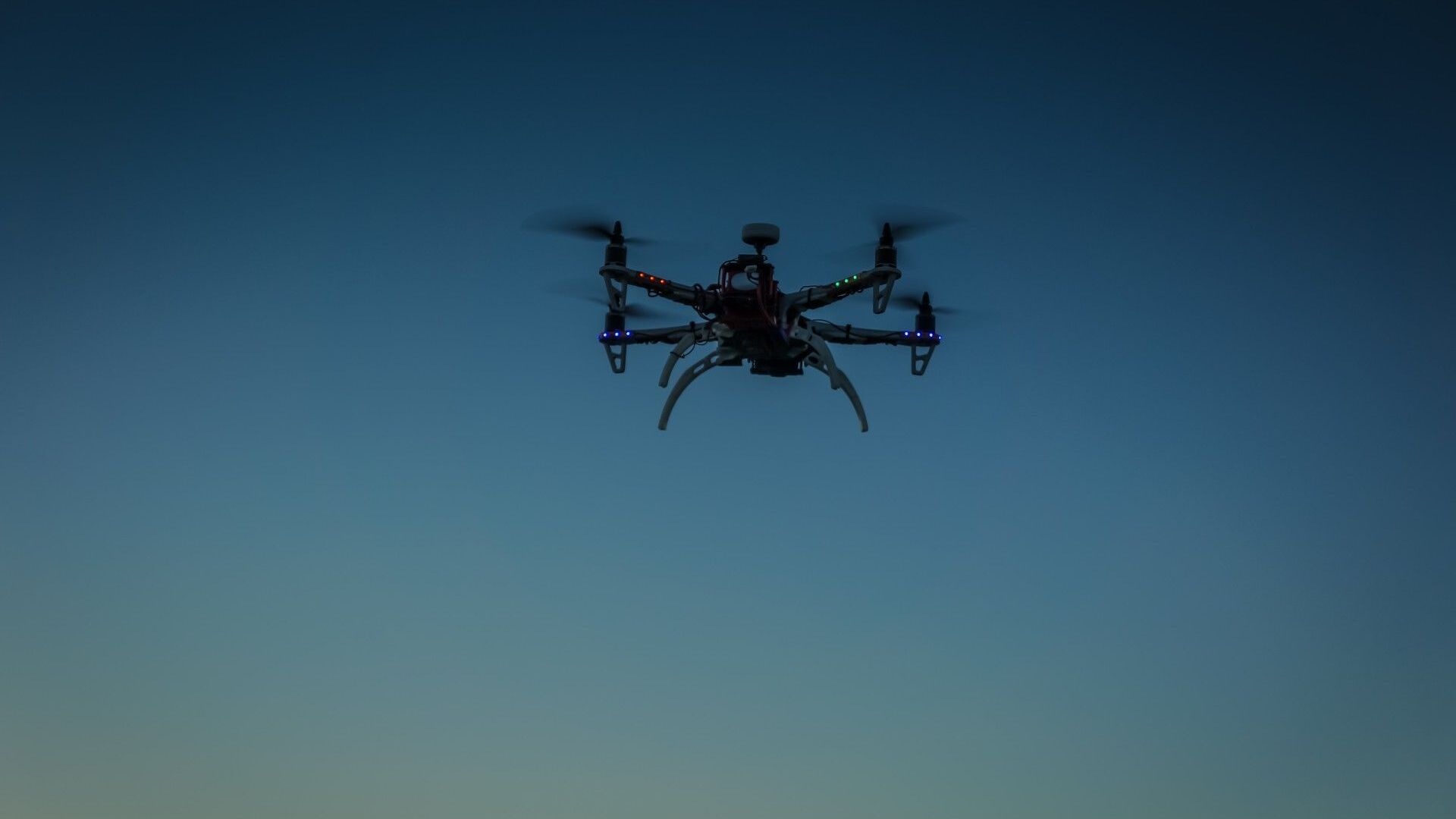https://sputnikglobe.com/20230215/russia-launches-tests-of-first-unmanned-tiltrotor-with-smart-wing-funding-agency-1107460389.html
Russia Launches Tests of First Unmanned Tiltrotor With Smart Wing: Funding Agency
Russia Launches Tests of First Unmanned Tiltrotor With Smart Wing: Funding Agency
Sputnik International
Russia launched bench tests of the first unmanned tiltrotor for cargo transportation with smart wing and vertical takeoff and landing
2023-02-15T11:28+0000
2023-02-15T11:28+0000
2023-02-15T11:28+0000
military
tiltrotor
russia
https://cdn1.img.sputnikglobe.com/img/107788/12/1077881278_0:98:1920:1178_1920x0_80_0_0_b8494cc762bc4afbd79bce05e917d587.jpg
"Bench tests of the Vezdelet project, an experimental vehicle capable of carrying up to 50 kilograms [110 pounds] of cargo, have started. Tests are taking place at the site of the technopark of TsAGI [the Central Aerohydrodynamic Institute]. During the test program, we will work out the automatic control system and the ability to take off and land autonomously," CEO of tiltrotor manufacturer M-Industries Mikhail Lipatov said, as quoted in the NTI statement. He also said that the company planned to create an experimental unit by the summer, and flying tests would be launched in the fall. The NTI noted that the unmanned tiltrotor with vertical takeoff and landing had an increased level of safety due to the variable geometry of the wing and was equipped with an autopilot. It will fly at over 100 kilometers per hour speed (60 miles per hour) and carry up to 50 kilograms (110 pounds) of cargo. The device will be able to spend at least 1.5 hours in the air with full load. The maximum flight altitude is 4,000 meters (13,000 feet). According to the designers’ plan, the tiltrotor will be equipped with eight electric propulsion units, the average service life of which is higher than that of internal combustion engines, and two wings. During takeoff, landing and hovering, the drone’s engines will be located vertically, and it will gain altitude due to the thrust force of the propellers. After switching to airplane mode, they will turn horizontally, and the tiltrotor will hold in the air thanks to the lifting force that occurs on the wing and walls of the impellers. The wings will fold during takeoff and landing, and extend at a safe altitude.
russia
Sputnik International
feedback@sputniknews.com
+74956456601
MIA „Rossiya Segodnya“
2023
Sputnik International
feedback@sputniknews.com
+74956456601
MIA „Rossiya Segodnya“
News
en_EN
Sputnik International
feedback@sputniknews.com
+74956456601
MIA „Rossiya Segodnya“
Sputnik International
feedback@sputniknews.com
+74956456601
MIA „Rossiya Segodnya“
first unmanned tiltrotor, cargo transportation, vertical takeoff
first unmanned tiltrotor, cargo transportation, vertical takeoff
Russia Launches Tests of First Unmanned Tiltrotor With Smart Wing: Funding Agency
MOSCOW (Sputnik) - Russia launched bench tests of the first unmanned tiltrotor for cargo transportation with smart wing and vertical takeoff and landing, the National Technological Initiative (NTI) told Sputnik on Wednesday.
"Bench tests of the Vezdelet project, an experimental vehicle capable of carrying up to 50 kilograms [110 pounds] of cargo, have started. Tests are taking place at the site of the technopark of TsAGI [the Central Aerohydrodynamic Institute]. During the test program, we will work out the automatic control system and the ability to take off and land autonomously," CEO of tiltrotor manufacturer M-Industries Mikhail Lipatov said, as quoted in the NTI statement.
He also said that the company planned to create an experimental unit by the summer, and flying tests would be launched in the fall.
The NTI noted that the unmanned
tiltrotor with vertical takeoff and landing had an increased level of safety due to the variable geometry of the wing and was equipped with an autopilot. It will fly at over 100 kilometers per hour speed (60 miles per hour) and carry up to 50 kilograms (110 pounds) of cargo. The device will be able to spend at least 1.5 hours in the air with full load. The maximum flight altitude is 4,000 meters (13,000 feet). According to the designers’ plan, the tiltrotor will be equipped with eight electric propulsion units, the average service life of which is higher than that of internal combustion engines, and two wings.
During takeoff, landing and hovering, the drone’s engines will be located vertically, and it will gain altitude due to the thrust force of the propellers. After switching to airplane mode, they will turn horizontally, and the tiltrotor will hold in the air thanks to the lifting force that occurs on the wing and walls of the impellers. The wings will fold during takeoff and landing, and extend at a safe altitude.


